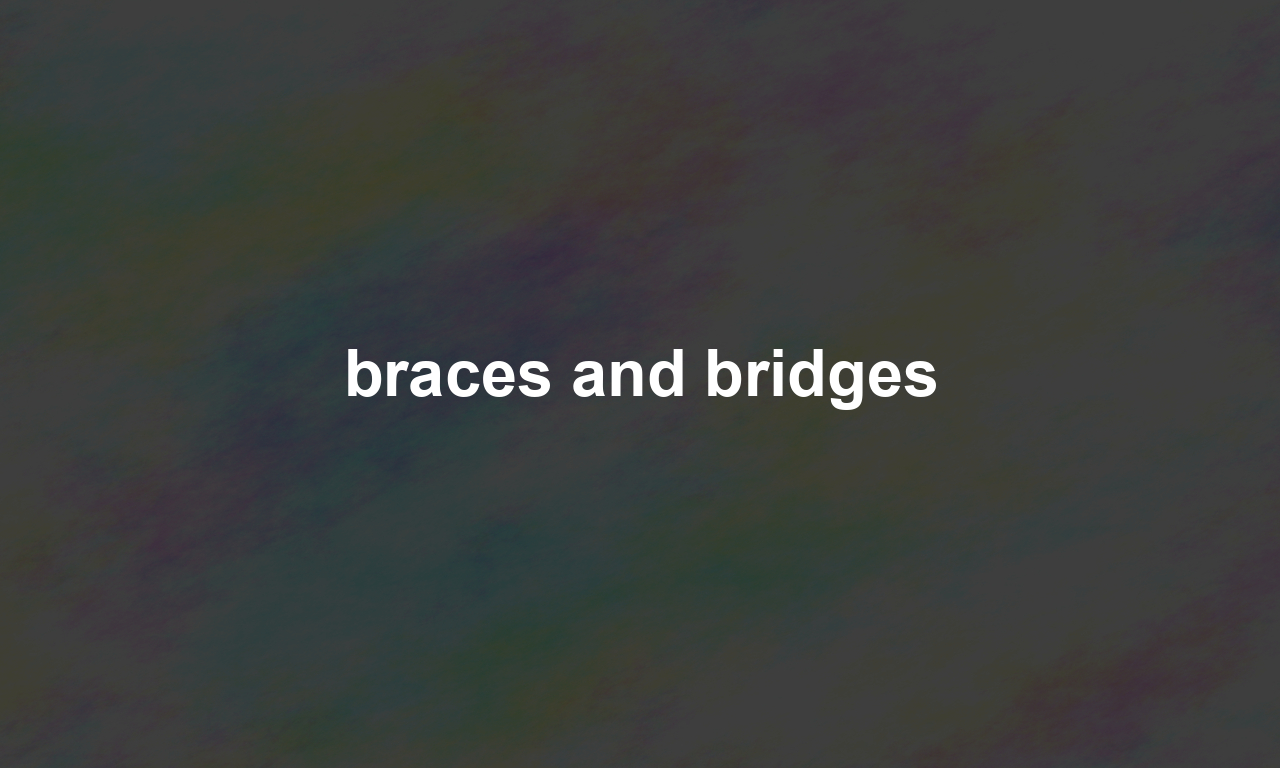Imagine waking up with a healthy, straight smile and the confidence to conquer your day. Orthodontic treatments have come a long way, making that dream attainable for many. Two common options you’re likely to encounter are braces and bridges. But how do you know which one is right for you? Don’t worry; we’ve got you covered! This post dives deep into braces and bridges, answering your most pressing questions and offering insightful advice on what to expect from each. Guided by expert opinions, you’ll be better equipped to make an informed decision about your dental health needs.
Understanding Braces
Braces are a popular orthodontic solution used primarily to straighten teeth, correct bite issues, and improve overall dental health. They work by applying continuous pressure over time to move teeth into the correct alignment.
Types of Braces
There are several types of braces to choose from, each catering to different needs:
- Traditional Metal Braces: These are the most common type, and they’re more comfortable today than ever before.
- Ceramic Braces: Similar to metal braces, but they blend in with your teeth, making them less noticeable.
- Lingual Braces: These are attached behind your teeth, making them virtually invisible from the front.
- Invisalign: A series of custom-made, clear aligners that gradually move your teeth into place.
Pros of Braces
- Effective: Braces can address a wide range of orthodontic issues efficiently.
- Permanent Results: Once treatment is complete, the results are often permanent, especially with proper aftercare.
- Versatile: Suitable for patients of all ages, from children to adults.
Cons of Braces
- Discomfort: Some initial discomfort is possible as your teeth begin to move.
- Dietary Restrictions: Certain foods need to be avoided to prevent damage to your braces.
- Visibility: Even with more discreet options, braces are still noticeable.
Want to dive deeper into the different types of braces? Check out this comprehensive guide on Healthline.
Exploring Dental Bridges
Dental bridges, on the other hand, are used to replace one or more missing teeth. They literally “bridge” the gap left by the absent teeth, helping restore your smile and maintain the shape of your face.
Types of Bridges
Just like braces, bridges come in various forms:
- Traditional Bridges: These involve creating a crown for the tooth or implant on either side of the missing tooth, with a pontic (false tooth) in between.
- Cantilever Bridges: Used when there are teeth on only one side of the gap.
- Maryland Bonded Bridges: A framework of metal or porcelain with wings that are bonded to the backs of your existing teeth.
- Implant-Supported Bridges: These use dental implants for support, rather than crowns or frameworks.
Pros of Bridges
- Aesthetic Improvement: Bridges can restore your smile and facial structure.
- Functional Benefits: They make chewing and speaking easier.
- Quick Procedure: Unlike implants, bridges can be fitted relatively quickly.
Cons of Bridges
- Durability: While strong, bridges are not as long-lasting as implants.
- Maintenance: They require good oral hygiene to prevent gum disease and decay.
- Invasive: Traditional bridges require adjacent teeth to be filed down, which can compromise their strength.
For a more detailed look into the types of bridges, refer to this well-researched article from Mayo Clinic.
Comparing Braces and Bridges
Now that you have a better understanding of both options, it’s time to make a comparison:
Purpose
Braces are primarily for orthodontic correction – they align teeth and correct bite issues. Bridges, however, are for restorative purposes – they fill gaps left by missing teeth.
Procedure Duration
Braces require a longer commitment, often ranging from 18 months to 3 years. Bridges, in contrast, can be completed in a matter of weeks.
Longevity
Braces offer long-term dental alignment benefits. Bridges need replacement approximately every 10-15 years, although they can last longer with proper care.
Choosing What’s Best for You
Your choice between braces and bridges should align with your dental needs and lifestyle:
- For Alignment: If your main goal is to straighten your teeth and correct bite issues, braces are your best bet.
- For Missing Teeth: If you need to replace missing teeth and restore your smile, a bridge is an excellent option.
However, consulting with your orthodontist or dentist is crucial in making an informed decision. They can provide personalized recommendations tailored to your unique dental health.
Final Thoughts
Whether you opt for braces or bridges, both have the power to significantly improve your dental health and boost your confidence. With advancements in dental technology, these treatments are more accessible and effective than ever. Be sure to consult a professional to determine the most suitable option for you.
For further reading, check out this insightful article by Colgate on both braces and retainers to better understand what you might need post-treatment.
Your dream smile is within reach – whether it requires braces or bridges, modern dentistry has a solution tailored just for you!

